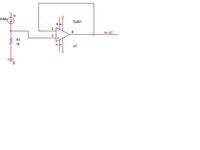ipunished
Junior Member level 3
- Joined
- Mar 15, 2011
- Messages
- 31
- Helped
- 0
- Reputation
- 0
- Reaction score
- 0
- Trophy points
- 1,286
- Location
- United Kingdom
- Activity points
- 1,504
Hello,
I have written the code for it and now I want to actually make it work.
Its used to test or check resistance, and i am using a pic with analog input..
I was just wondering how to make that possible?
I know that I can drive a constant, known current through the resistor and then how do I connect it to the pic and how tio read it?
i was thinking differential amplifier but i dont think that will work....
anyone have any ideas on this?
Thank you
I have written the code for it and now I want to actually make it work.
Its used to test or check resistance, and i am using a pic with analog input..
I was just wondering how to make that possible?
I know that I can drive a constant, known current through the resistor and then how do I connect it to the pic and how tio read it?
i was thinking differential amplifier but i dont think that will work....
anyone have any ideas on this?
Thank you
